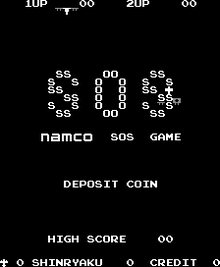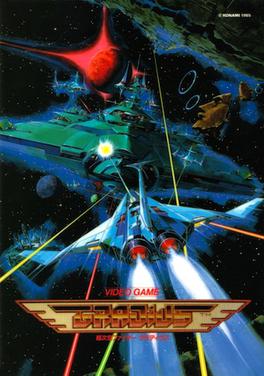
Gradius is a side-scrolling shooter video game developed and published by Konami. The first game in the Gradius series, it was originally released as a coin-operated arcade game in 1985. The player maneuvers a spacecraft known as the Vic Viper that must defend itself from the various alien enemies. The game uses a power-up system called the "power meter", based upon collecting capsules to purchase additional weapons.

Contra is a run and gun video game developed and published by Konami, originally developed as a coin-operated arcade video game in 1986 and released on February 20, 1987. A home version was released for the Nintendo Entertainment System in 1988, along with ports for various home computer formats, including the MSX2. The arcade and computer versions were localized as Gryzor in Europe, and the NES version as Probotector in PAL regions.
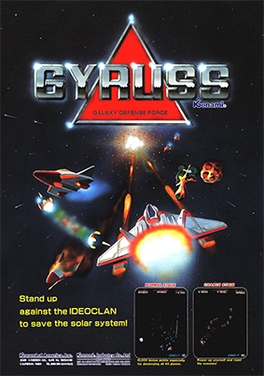
Gyruss is shoot 'em up arcade video game designed by Yoshiki Okamoto and released by Konami in 1983. Gyruss was initially licensed to Centuri in the United States for dedicated machines, before Konami released their own self-distributed conversion kits for the game. Parker Brothers released contemporary ports for home systems. An enhanced version for the Family Computer Disk System was released in 1988, which was released to the North American Nintendo Entertainment System in early 1989.

Choplifter is a military themed scrolling shooter developed by Dan Gorlin for the Apple II and published by Broderbund in 1982. It was ported to the Atari 8-bit family the same year and also to the VIC-20, Commodore 64, Atari 5200, ColecoVision, MSX, and Thomson computers.
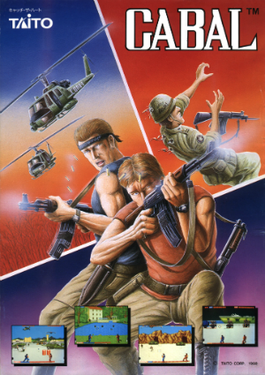
Cabal is a 1988 arcade shooter video game originally developed by TAD Corporation and published in Japan by Taito, in North America by Fabtek and in Europe by Capcom. In the game, the player controls a commando, viewed from behind, trying to destroy various enemy military bases. The game was innovative for the era, but only a mild success in the arcades, and became better known for its various home conversions.

1943: The Battle of Midway is a 1987 vertically scrolling shooter arcade video game developed and published by Capcom.

Bosconian is a scrolling multidirectional shooter arcade video game developed and released by Namco in Japan in 1981. In North America, it was manufactured and distributed by Midway Games. The goal is to earn as many points as possible by destroying enemy missiles and bases using a ship which shoots simultaneously both the front and back.
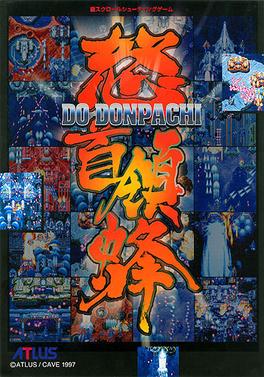
DoDonPachi is a vertically-scrolling bullet hell shoot' em up developed by Cave and published by Atlus in 1997. It was the second game developed by Cave, and the sixth on Cave's first-generation arcade hardware. As with its predecessor DonPachi, the title is both a Japanese term for expressing the sound of gunfire, and a term that relates to bees. The sequel to this game is DoDonPachi II, which was made by a different developer. The original developer later released its own sequel, DoDonPachi DaiOuJou.

Carnival is a fixed shooter developed by Gremlin and released by Sega in arcades in 1980. It was one of the first video games with a bonus round.
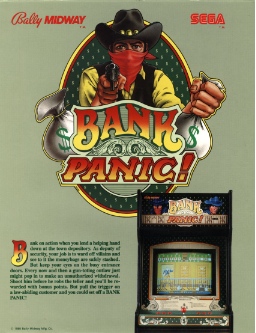
Bank Panic is an arcade shooter game developed by Sanritsu Denki and released by Sega in 1984. Bally-Midway manufactured the game in the US. The player assumes the part of an Old West sheriff who must protect a bank and its customers from masked robbers.

Trio The Punch: Never Forget Me... is an arcade game released by Data East in 1990. Chelnov and Karnov were produced by the same director, and the three games are grouped together by Data East as the Deco-gē Trio.

Zero Gunner 2 is a 3D multidirectional shooter developed by Psikyo as a sequel to Zero Gunner, the original arcade game. It was released for the Dreamcast in Japan in 2001.
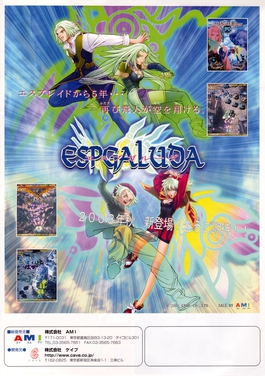
Espgaluda is a 2003 manic shooter by Cave and published by AMI. It is the spiritual successor to ESP Ra.De. and is followed by Espgaluda II.

DoDonPachi II: Bee Storm is a vertically scrolling bullet hell shoot 'em up developed by International Games System (IGS) and published by Capcom in 2001.
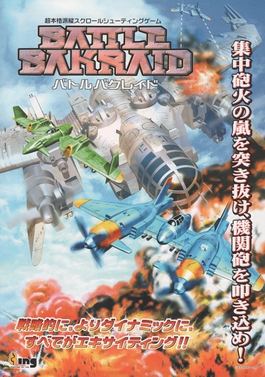
Battle Bakraid is a vertical scrolling shoot 'em up arcade game by Eighting released in 1999. It is the spiritual successor to the 1996 arcade game Battle Garegga. Players control one of nine fighter jets and shoot enemies, collect power-ups, and defeat bosses to advance through the game.
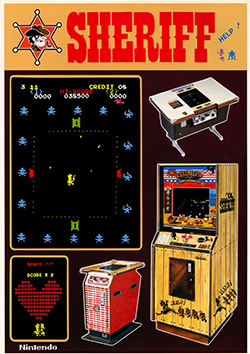
Sheriff, also known as Bandido, is a 1979 multi-directional shooter arcade game by Nintendo. It is one of several Western-themed video games from the 1970s, along with Western Gun, Outlaw, and Boot Hill. The player controls a county sheriff tasked with defense of a town against bandits, to rescue the captured woman. It was a commercial success in Japan, where it was among the top ten highest-grossing arcade games of 1979.

Space Firebird is a 1980 arcade video game developed by Nintendo R&D1 and released by Nintendo in Japan and Europe. In America, the game was distributed by Far East Video. Sega-Gremlin also released a version of the game in North America.

Rolling Thunder is a run and gun video game developed by Namco in Japan and Europe and released in 1986 as a coin-operated arcade video game using the Namco System 86 hardware. It was distributed in North America by Atari Games. The player takes control of a secret agent who must rescue his female partner from a terrorist organization. Rolling Thunder was a commercial success in arcades, and it was released for various home computer platforms in 1987 and the Nintendo Entertainment System in 1989. The original arcade game has been included in various classic game compilations as well. It influenced later arcade action franchises such as Shinobi and Time Crisis, which borrowed mechanics such as taking cover behind crates.
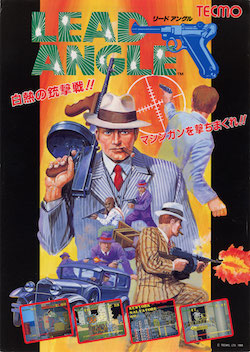
Dead Angle, also known as Lead Angle and Gang Hunter, is a 1988 arcade shooter game developed by Seibu Kaihatsu. It is the follow-up to the company's mobster-themed Empire City: 1931. In Dead Angle, players take control of the game's protagonist, who must rescue his girlfriend from a mob boss. A port of the game was released by Sega for its Master System console.
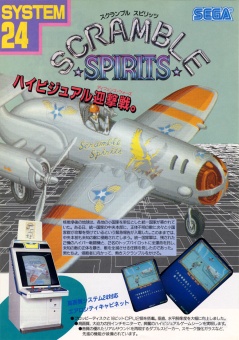
Scramble Spirits is a vertically scrolling shooter game released for the arcades by Sega in 1988. It was ported to the Master System the same year, then to personal computers in 1990.
